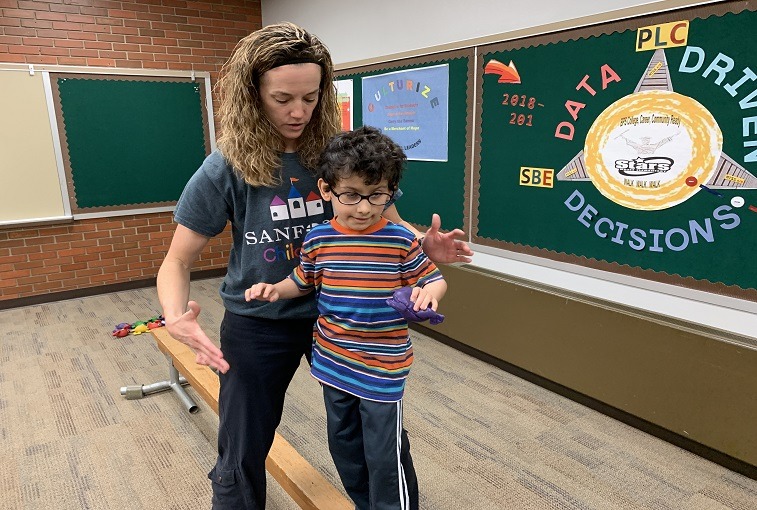Going to school can be both exciting and nerve-racking for kids. Getting to know their teacher, finding new friends and getting assignments done on time can put a lot of pressure on them.
For students who have mobility or developmental delays, they face an additional challenge in the classroom. To help, Sanford Health provides pediatric physical therapy at all public schools in Bismarck, North Dakota, helping kids who have difficulty doing tasks many of us take for granted.
Sanford Health works with students who have an individual education plan and demonstrate some sort of mobility or developmental impairment. Jackie Mrachek has provided pediatric physical therapy at Sanford Health in Bismarck for 15 years and has spent the past 13 years of her career in the schools.
“You really learn how resilient kids are and how positive their outlook is,” she said.
Mrachek works with students who have genetic syndromes, muscular dystrophy, cerebral palsy, spinal muscular atrophy and other mobility and developmental delays. One of the most rewarding and challenging parts of her job is playing with the kids.
“And it’s simultaneously challenging because there’s a goal to my play and how do we get them to move in a certain way and use their body in a certain way, so doing that through play is a good challenge in many ways,” Mrachek said.
Long-term results
Another rewarding, yet challenging, part of her job is seeing young patients grow up and envisioning what their future looks like.
“What’s he or she going to be like when they’re 25? Can I see that picture? Can I help their parents to see that picture? Are they ready to see that picture? So having those conversations and then trying to figure out how we maximize their mobility now when they’re young, so that they’ll keep that mobility as they age,” Mrachek said.
When kids are younger, there’s always the goal for them to walk, which may or may not come for some kids, she said. It’s exciting when a child begins to walk, but it’s not always easy, especially as kids get older.
“For some of them when it does come, yes it was worth it, but they’re 4. So now when they’re 8, walking is hard and I’m slower than all of my classmates, I can’t keep up in line. So how do I help them value their walking so that when they’re 25 and they want to go out with friends but their friends don’t have a vehicle that would transport a wheelchair, that they can still walk and they choose to walk and they’ve kept that skill,” Mrachek said.
In-school benefit
One of the advantages of working with kids at school in addition to at the clinic is the pediatric physical therapy can focus on functionality skills needed in the classroom.
“If I’m in the clinic, my mindset and energy is on how are their muscular structures working? Where are they tight? Where do they need to get stronger? Where when I come into the schools, I’m thinking more specifically about function. For instance, how can they walk from the classroom to gym class? Then, an adapted activity in gym class so that they’re doing something similar to their peers, but they’re not at the functional level of their peers. So it’s true function. It’s what kids their age are doing,” said Mrachek.
Having that patient-centered care is something that’s important to the physical therapists and families.
“It means a great deal to these families to be able to have that continuum of care,” she said.
…
Posted In Allied Health, Back to School, Children's, Health Information, Inclusion at Sanford, Rehabilitation & Therapy
